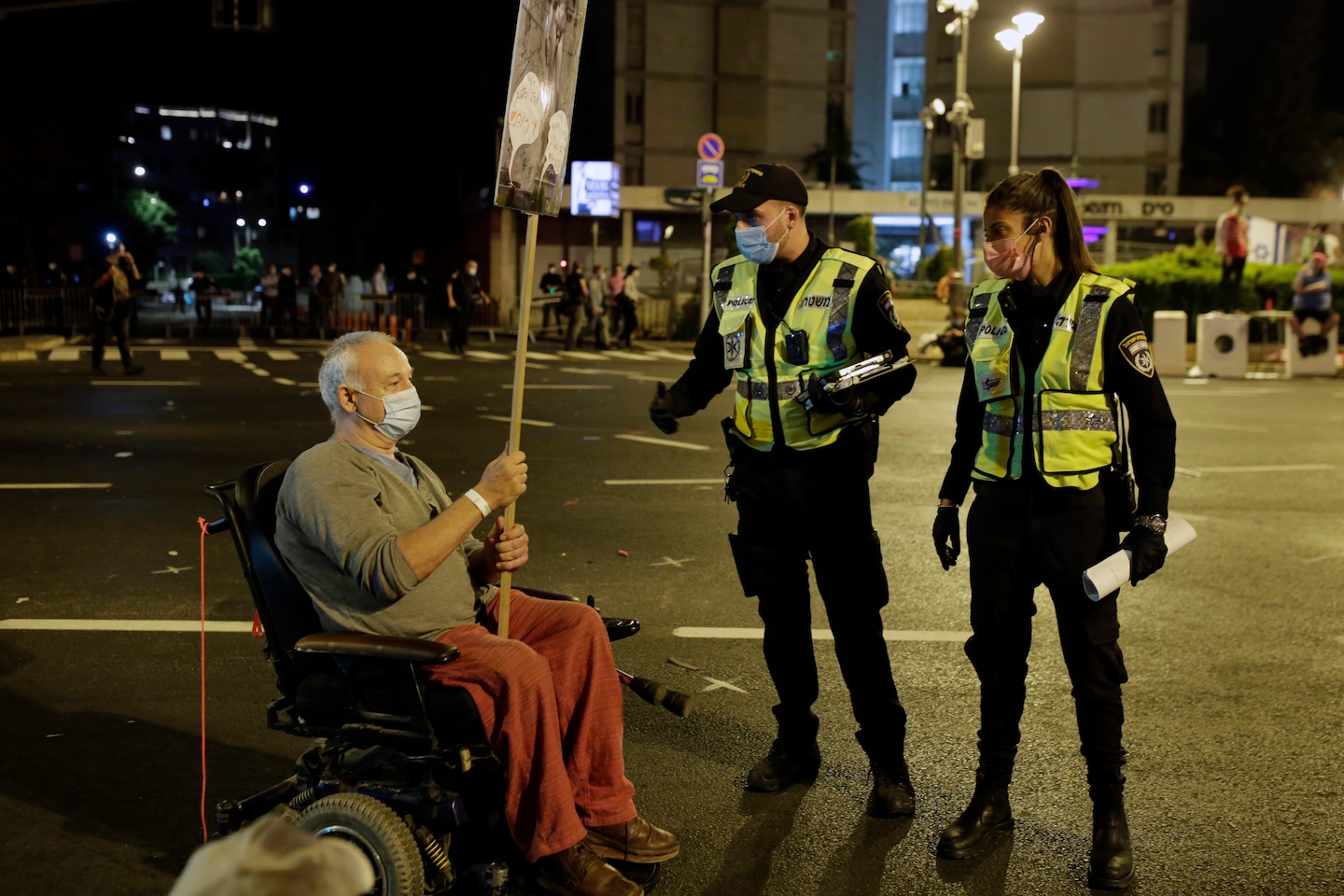The pandemic is an era of protests — and protest restrictions

These rules often affect how and when people can protest. Here’s what demonstrations look like in some places that have implemented new restrictions.
Israel
For months, demonstrators have been gathering weekly in front of Prime Minister Benjamin Netanyahu’s residence on Balfour Street in Jerusalem to protest a lengthy list of grievances against Israel’s longest-serving leader.
Signs focus on the corruption charges against Netanyahu. Chants call for him to step aside amid repeated election impasses and coalition-building standoffs. And people gather to register their frustrations with the government’s handling of the coronavirus pandemic. Critics accuse the prime minister of politicizing public health measures and failing to contain the economic fallout.
After taking swift initial action to curb the virus this spring, Netanyahu pushed for a quick economic reopening this summer — and new cases have since climbed. So in early September, ahead of the Jewish high holidays, when many businesses close and families gather, Netanyahu ordered a sweeping, nationwide shutdown. Under the new rules, no groups of more than 20 people can gather, and no one can travel more than a kilometer from their home to attend a protest.
Demonstrators condemned the measures as an attempt to silence protest. Others accused Netanyahu of capitulating to ultra-Orthodox leaders, who form a key part of his coalition and were frustrated that previous rules limited prayers but not protests.
So far, demonstrations have continued nonetheless. Israelis have taken to their cars in motorcades bearing black flags, one of the symbols of the protests. Others gathered in front of Israel’s parliament when it debated and approved the new measure earlier this week. Some groups are organizing synchronized local protests.
Spain
Spain’s capital has opted for partial, localized shutdowns as coronavirus cases in the region — just months ago one of the hot spots of the pandemic in Europe — once again begin to rise.
Since Sept. 21, around 850,000 people in 37 hard-hit districts of Madrid have been unable to leave their neighborhoods except for work, school or for essential purposes such as to seek medical treatment. Within these zones, social gatherings are limited to six people, with fines in place for noncompliance.
But the communities in question are also predominantly lower-income and have high immigrant populations. The problem, community leaders say, is not the number of coronavirus cases alone, but also the lack of sufficient health provisions and economic opportunities to sustain people through the pandemic.
Over the past two weeks, hundreds of people have defied local regulations and taken to the streets against policies they say discriminate against the poor. “No to a class-based lockdown,” rang one chant, the BBC reported. Others have used motorcade protests to bypass the restrictions.
“It is illogical that you can go and do things in wealthier areas, but you cannot do the same in [the neighborhood of] Vallecas,” Begona Ramos, 56, a protester in one of the locked-down neighborhoods, told Reuters. “There is the same risk of contagion. They are discriminating.”
Madrid’s regional health chief has warned that if confirmed new infection rates do not fall soon, citywide lockdown measures could be imposed. The Spanish government on Oct. 1 ordered a broader shutdown for all of the Madrid area, but local authorities rejected it.
Britain
Economic grievances have been a common denominator among protesters across the globe during the pandemic, which has led to wide-ranging disruptions in labor markets. Another common thread: a subset of protests targeting the scientific and political legitimacy of coronavirus-related measures.
On Sept. 26, thousands of people filled London’s Trafalgar Square to protest Britain’s tightened coronavirus rules. Some participants railed against vaccinations and face mask requirements. Others chanted against what they see as infringements on freedom or chanted in favor of unfounded theories that the virus is part of a political conspiracy.
The British government is struggling to counteract a renewed rise in cases. It has imposed stricter measures in northeastern England, and in some places, including London, people are barred from gathering in groups of more than six. There are some exceptions, such as for authorized protests where organizers agree to maintain social distancing.
The latest Trafalgar Square protest, however, ended with clashes between demonstrators and police, who said participants were violating the social distancing rules they had come to oppose.
Other countries in Europe, including Germany, have seen similar protests as the continent struggles with a renewed rise in cases.
Hong Kong
Pro-democracy protests in Hong Kong began long before the pandemic and have continued, with demonstrators facing a pervasive police presence and increasing arrests under a new national security law introduced by Beijing over the summer, aimed at suppressing dissent and rolling back the long-standing freedom to demonstrate.
Last month, Hong Kong police arrested pro-democracy activist Joshua Wong on charges including a violation of the city’s face mask ban during protests last year. He has since been granted a temporary release. The crackdown on demonstrations has intensified, but as a result of the pandemic, face masks are now mandatory in public places.






